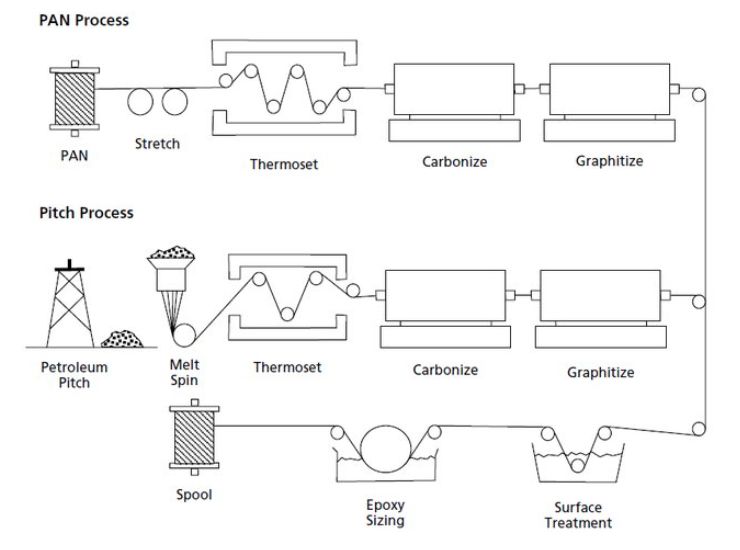Carbon fiber is made from organic polymers, which consist of long strings of molecules held together by carbon atoms. Most carbon fibers (about 90%) are made from the polyacrylonitrile (PAN) process. A small amount (about 10%) are manufactured from rayon or the petroleum pitch process.
The production process of PAN-based carbon fibers can be divided into five steps:
1. Spinning and stretching the PAN copolymer to form a fiber. Stretching results in an elongation of 500 to 1300 percent, and is an essential step in obtaining high-strength fiber.
2. Stabilization and oxidation in air at 200 to 300°C under tension. Heat setting or oxidation crosslinks the PAN and stabilizes the structure so that it will not melt during the carbonization process.
3. Carbonization in an inert atmosphere at 980 to 1595°C. This process is conducted in a nitrogen atmosphere and converts the PAN to carbon.
4. Graphitization in an inert atmosphere at 1980 to 3040°C, which produces a more crystalline structure and a higher elastic modulus. The final carbon content is greater than 99 percent!
5. Surface treatment and sizing.
Very interesting, right?


